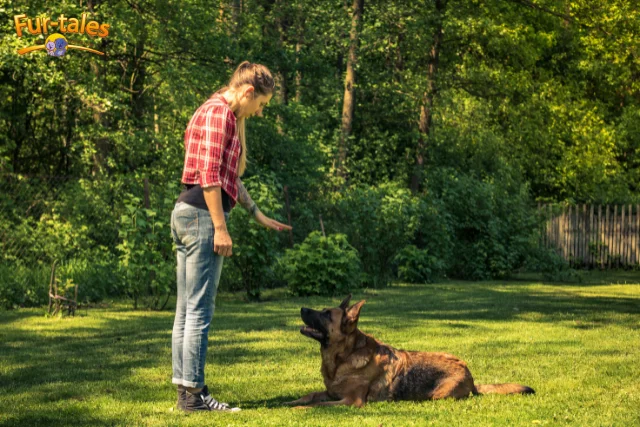
Basic Dog Obedience Training Commands Every Owner Should Teach
Training your dog isn’t just about teaching tricks—it’s about building a relationship based on trust, communication, and respect. Dog obedience training is essential for keeping your furry friend safe, well-behaved, and integrated into your daily life. Whether you’re a first-time dog parent or adding a new pup to your pack, mastering a few fundamental commands lays the groundwork for a lifetime of good behavior.
In this article, we’ll walk through the basic dog obedience training commands every owner should teach, why they matter, and how to train them in a way that’s fun, effective, and rewarding for both of you.
Why Obedience Training Matters
Before diving into the actual commands, it’s important to understand the “why” behind dog training:
- Safety: Commands like “come” or “stay” can prevent accidents or injuries.
- Bonding: Training time strengthens your relationship and builds trust.
- Behavior control: Prevents problem behaviors like jumping, barking, or running off.
- Socialization: A well-trained dog is easier to manage around people, kids, and other pets.
- Mental stimulation: Dogs thrive on learning—it helps prevent boredom and destructive behaviors.
Whether your dog is a young puppy or an older rescue, it’s never too late to start obedience training.
Best Practices Before You Begin
1. Use Positive Reinforcement
Reward-based training is scientifically proven to be more effective and humane. Use treats, praise, petting, or toys to reinforce good behavior.
2. Keep Sessions Short and Fun
Aim for 5-10 minute sessions, especially with puppies. Frequent short sessions are better than infrequent long ones.
3. Be Consistent
Use the same words, tone, and hand signals every time you give a command.
4. Train in Low-Distraction Environments First
Start indoors or in a quiet space before progressing to parks or public areas.
5. Practice Patience
Every dog learns at their own pace. Stay calm, encouraging, and never punish mistakes.
7 Basic Dog Obedience Training Commands to Teach First
1. Sit
Why it matters: “Sit” is often the first command taught because it helps manage behavior and serves as a foundation for others.
How to train it:
- Hold a treat near your dog’s nose.
- Slowly move your hand upward—this should cause their head to follow and their rear to lower.
- As soon as they sit, say “Sit,” and give the treat.
Pro tip: Say the command as they’re doing the behavior, then reward immediately.
2. Stay
Why it matters: “Stay” keeps your dog in place, useful for safety in public places or around visitors.
How to train it:
- Ask your dog to sit.
- Open your palm in front of you like a “stop” signal and say “Stay.”
- Take a step back. If they hold position, reward.
- Gradually increase the distance and duration over time.
Pro tip: Always return to your dog before releasing them to avoid teaching them to walk to you automatically.
3. Come
Why it matters: A solid recall could save your dog’s life if they’re off-leash or headed toward danger.
How to train it:
- Start indoors or in a fenced area.
- Crouch down, open your arms, and cheerfully say, “Come!”
- Reward enthusiastically when they reach you.
Pro tip: Never use “come” when you’re about to do something unpleasant (like giving a bath or leaving the park).
4. Down
Why it matters: “Down” helps calm your dog and is useful in public settings or around guests.
How to train it:
- Ask your dog to sit.
- Hold a treat to the floor in front of them and move it slightly away.
- Their body should follow—once they lie down, say “Down” and reward.
Pro tip: Some dogs are resistant to lying down. Be patient, and don’t force their body.
5. Leave It
Why it matters: Prevents your dog from picking up dangerous or unwanted items (like trash, harmful food, or dead critters).
How to train it:
- Place a treat in both hands.
- Show your dog one closed fist with the treat inside and say “Leave it.”
- Ignore licking, sniffing, or pawing. Once they stop trying, reward with the treat from the other hand.
Pro tip: Never give the dog the original “leave it” item—they should learn that ignoring it leads to a better reward.
6. Heel
Why it matters: Helps control pulling during walks and keeps your dog close.
How to train it:
- Hold a treat near your left leg and start walking.
- When your dog walks beside you, say “Heel” and reward.
- If they pull ahead, stop walking and wait until they return to your side.
Pro tip: Practice in short bursts, and gradually extend walk time with breaks for play.
7. No / Off
Why it matters: “No” or “Off” tells your dog to stop doing something undesirable—like jumping on guests or getting on furniture.
How to train it:
- Catch them in the act and say “Off” in a firm, calm voice.
- Redirect their behavior and reward when they comply.
Pro tip: Don’t yell or get aggressive. Redirect and praise works much better than scolding.
Training Tools That Can Help
- Clicker: Great for marking exact moments of desired behavior.
- Treat pouch: Keeps rewards handy.
- Leash & harness: Useful for heel and stay practice.
- Training mat or bed: Helps with place training and calm behaviors.
When to Seek Professional Help
If your dog shows signs of aggression, fear-based behavior, or isn’t responding to your training efforts, a certified professional dog trainer (CPDT) can offer personalized guidance. Group classes also provide a great environment for socialization and structured learning.
Real-Life Application of Commands
Imagine walking your dog at a busy park. You use “Heel” to walk calmly, “Sit” at a crosswalk, “Stay” while tying your shoe, and “Come” when your dog gets distracted. These commands aren’t just for tricks—they make daily life safer, smoother, and more enjoyable.
FAQs
Q: When should I start dog obedience training?
As early as 8 weeks old! Puppies are like sponges, and early training sets the stage for lifelong good behavior.
Q: How long does it take to train basic commands?
With consistency, many dogs learn basic commands in a few weeks. However, continued practice is key for long-term retention.
Q: What if my dog doesn’t respond to treats?
Try different motivators—some dogs prefer praise, toys, or playtime over food.
Q: Can I train an older dog?
Absolutely. It may take more patience, but adult dogs are very capable of learning obedience commands.
Q: How often should I train my dog?
Short, daily sessions (5-10 minutes) are ideal. Incorporate commands into everyday life for ongoing practice.
Q: Should I punish my dog when they disobey?
No. Positive reinforcement is more effective and strengthens your bond. Ignore bad behavior and reward the good.
Image Source: Canva
